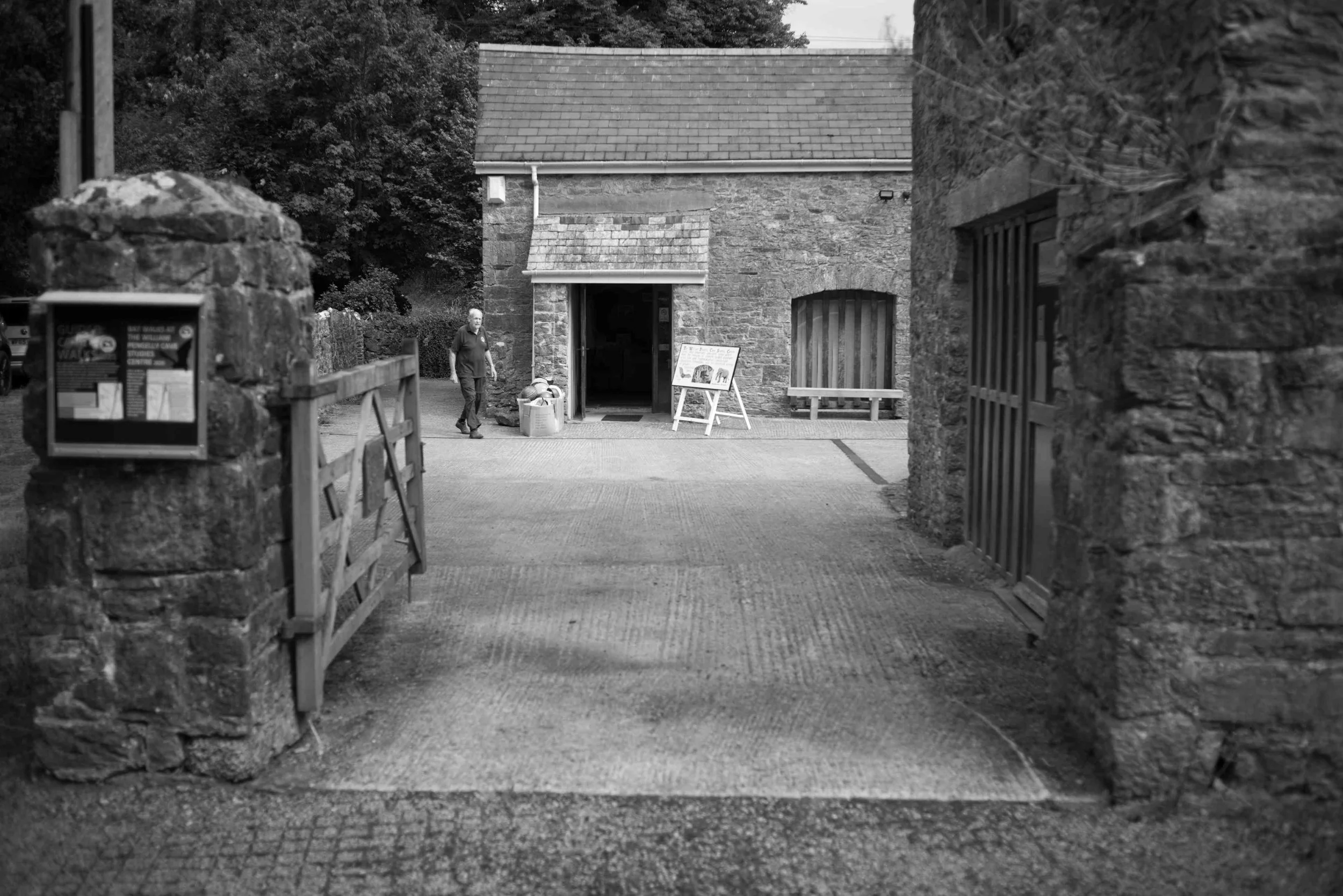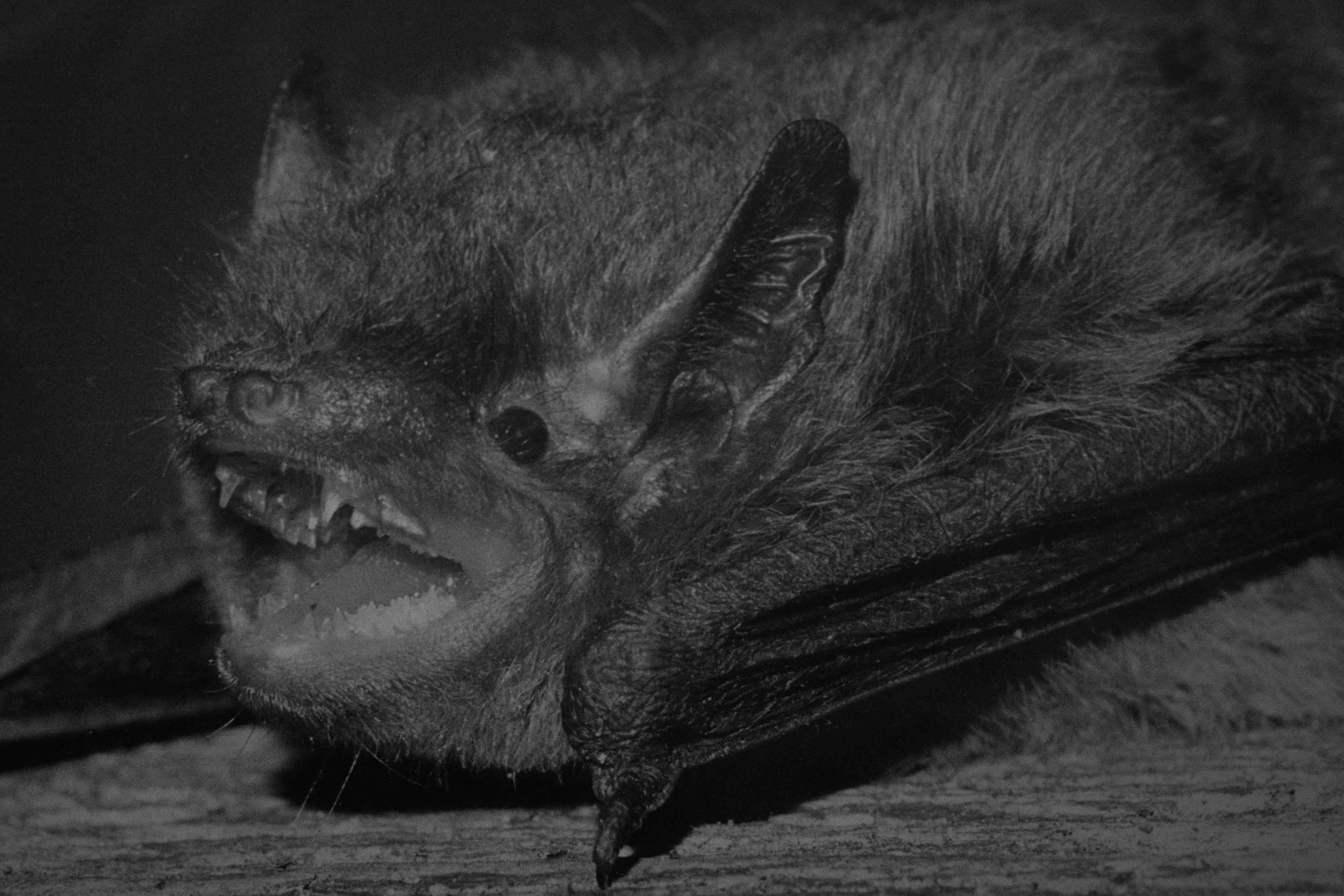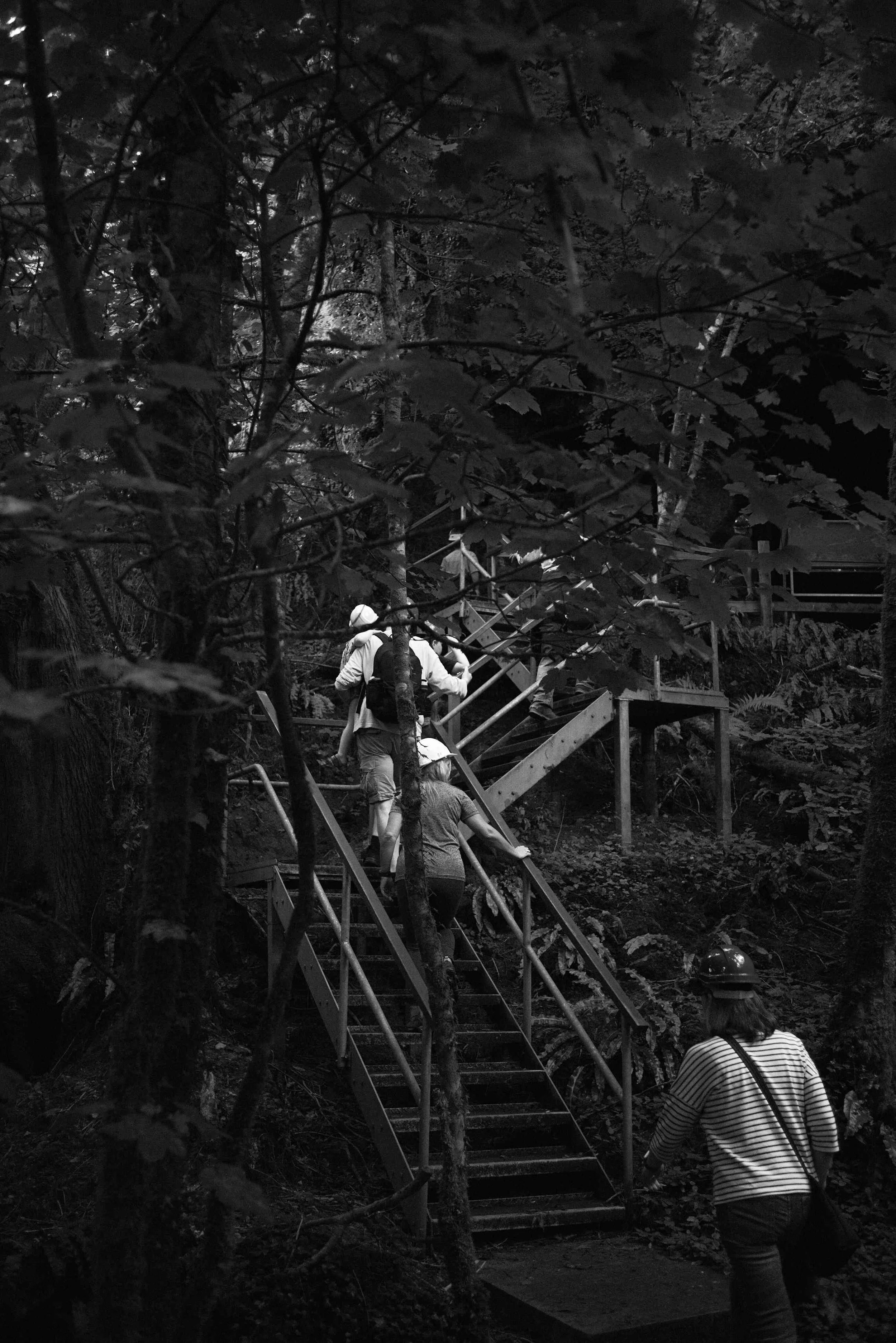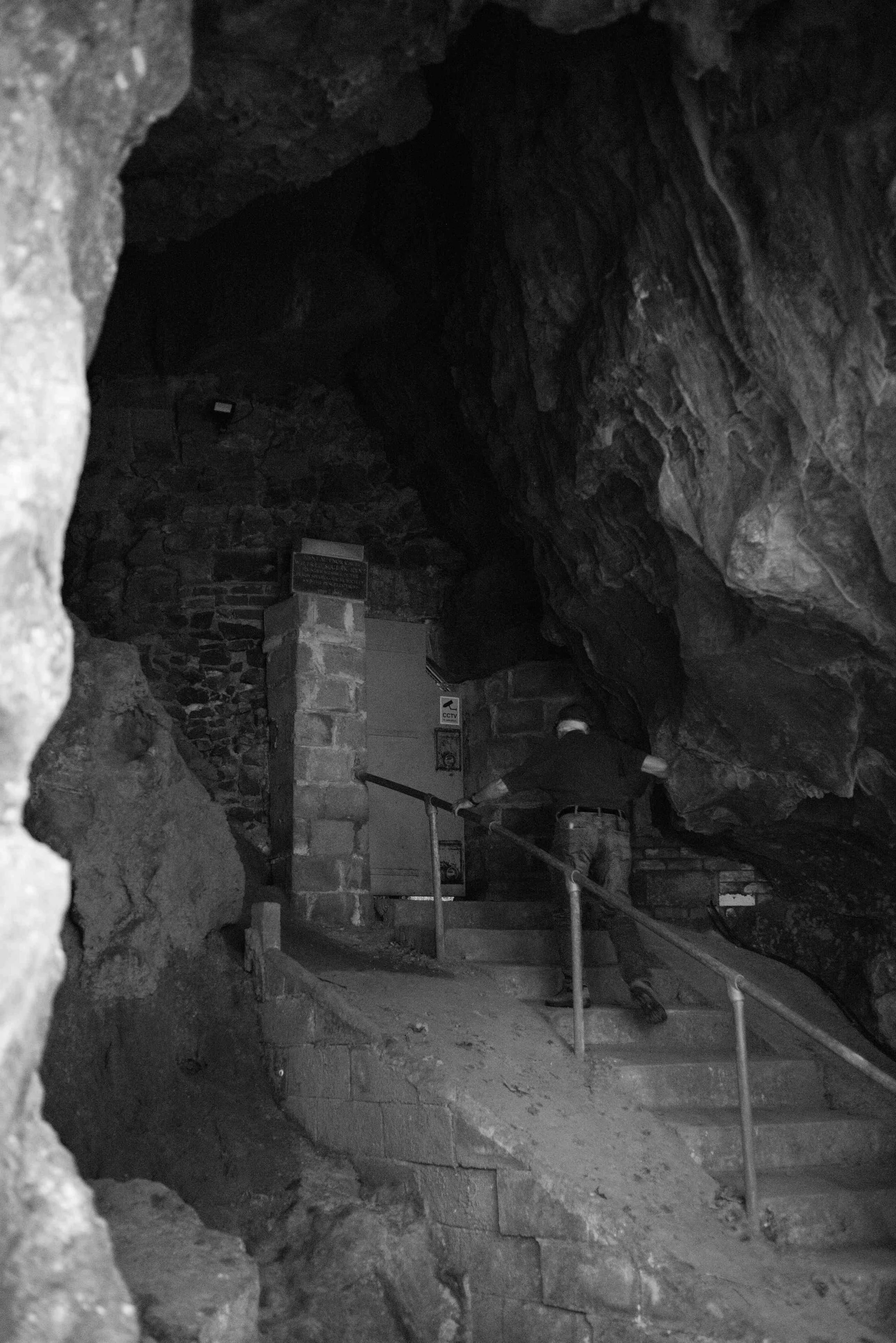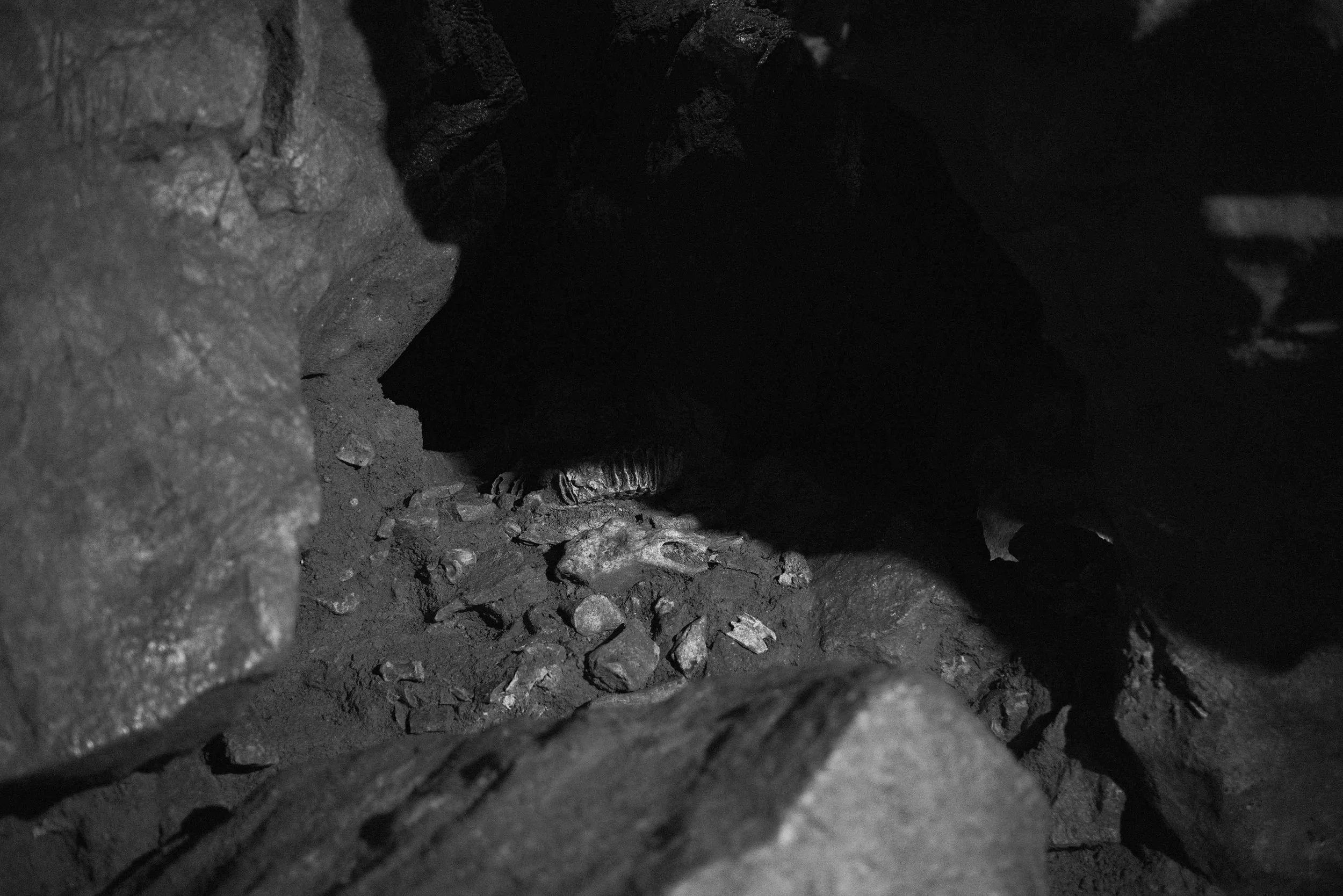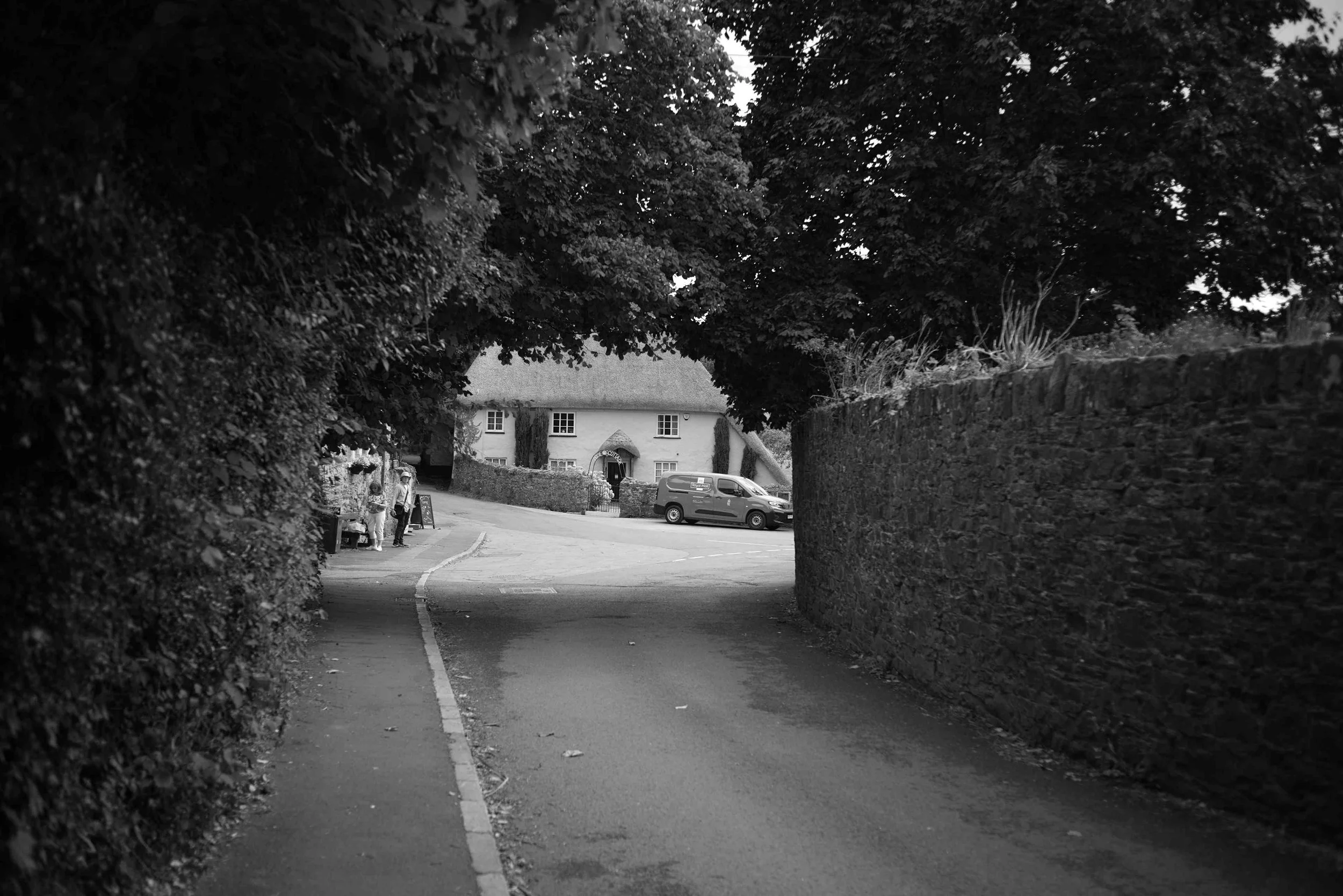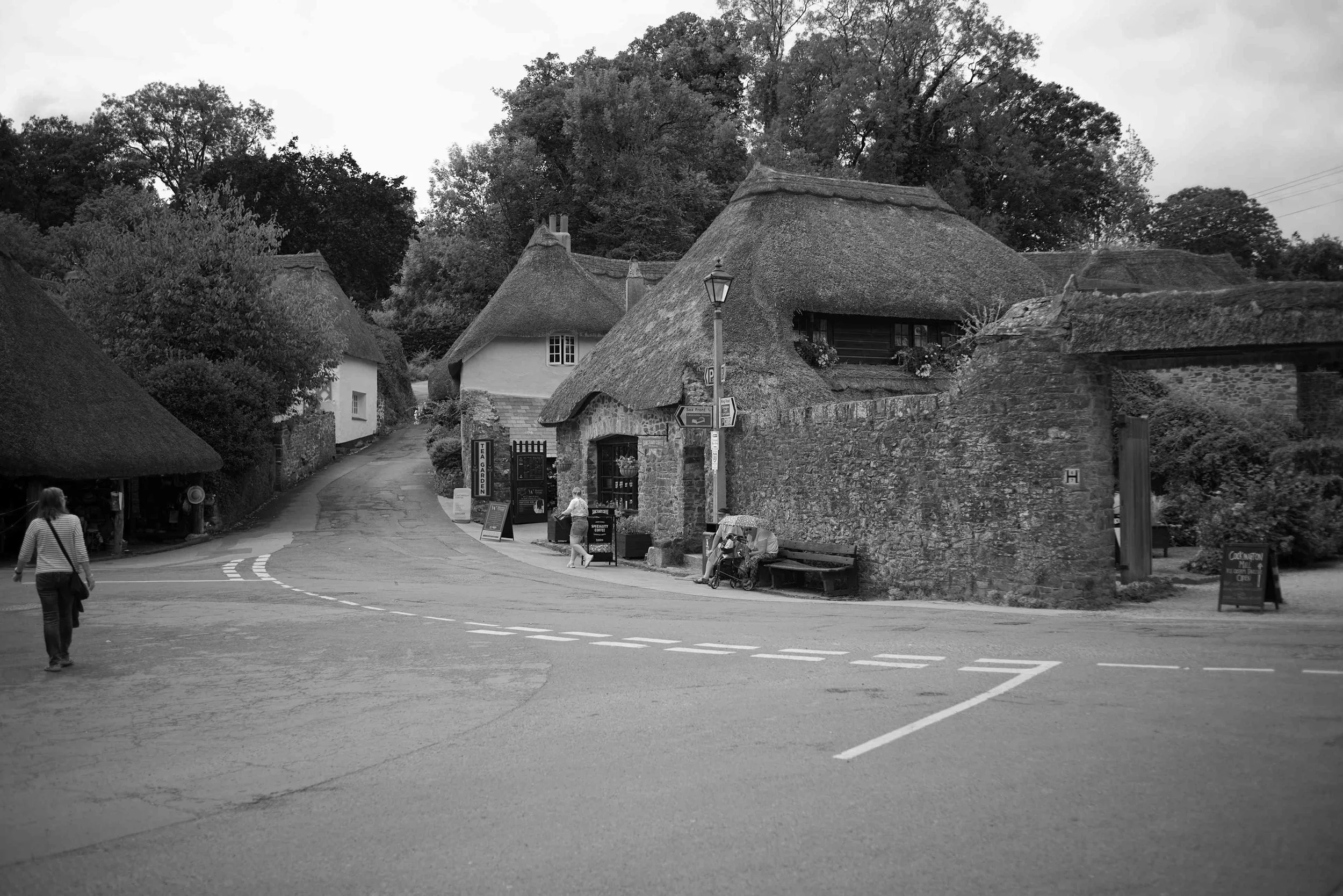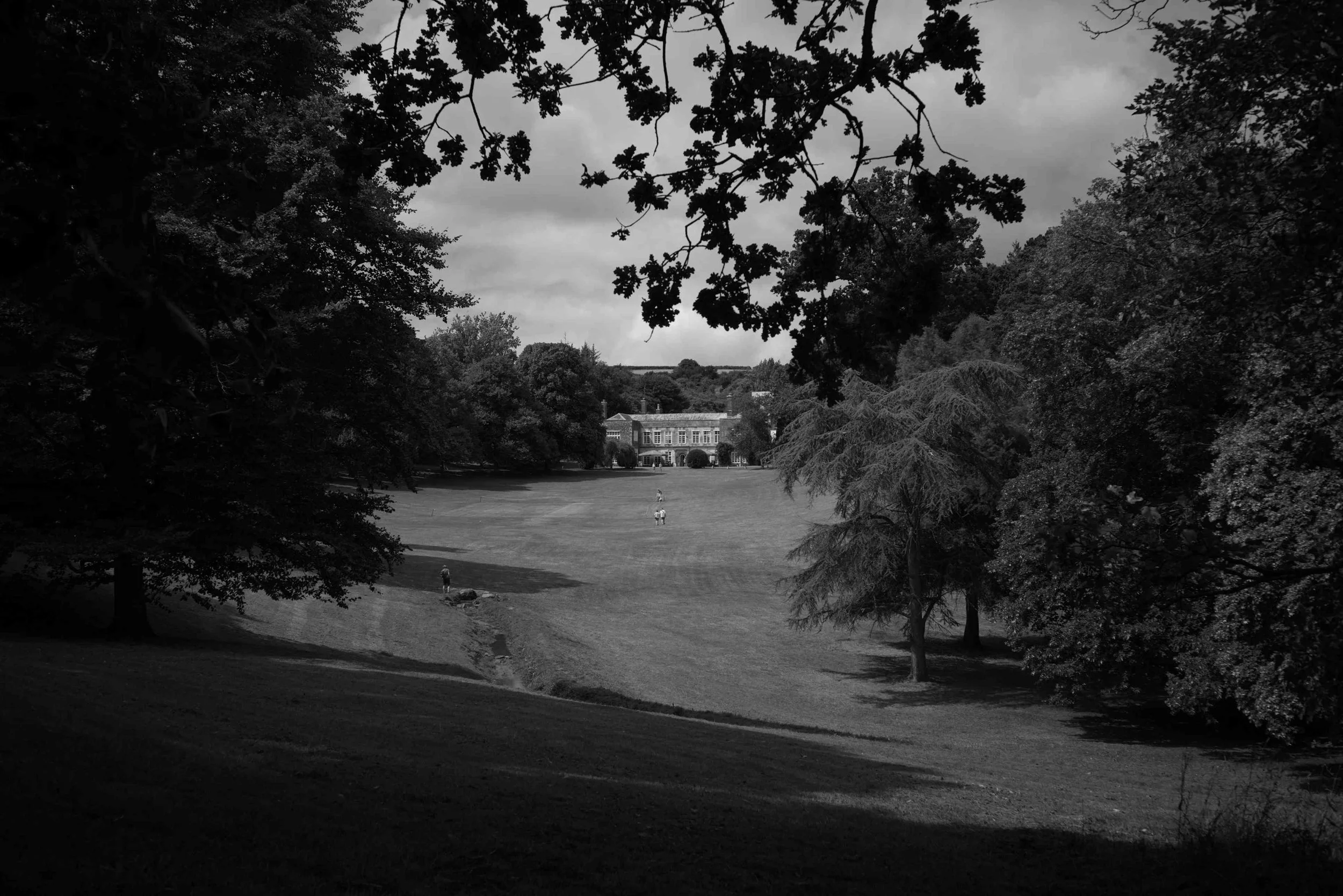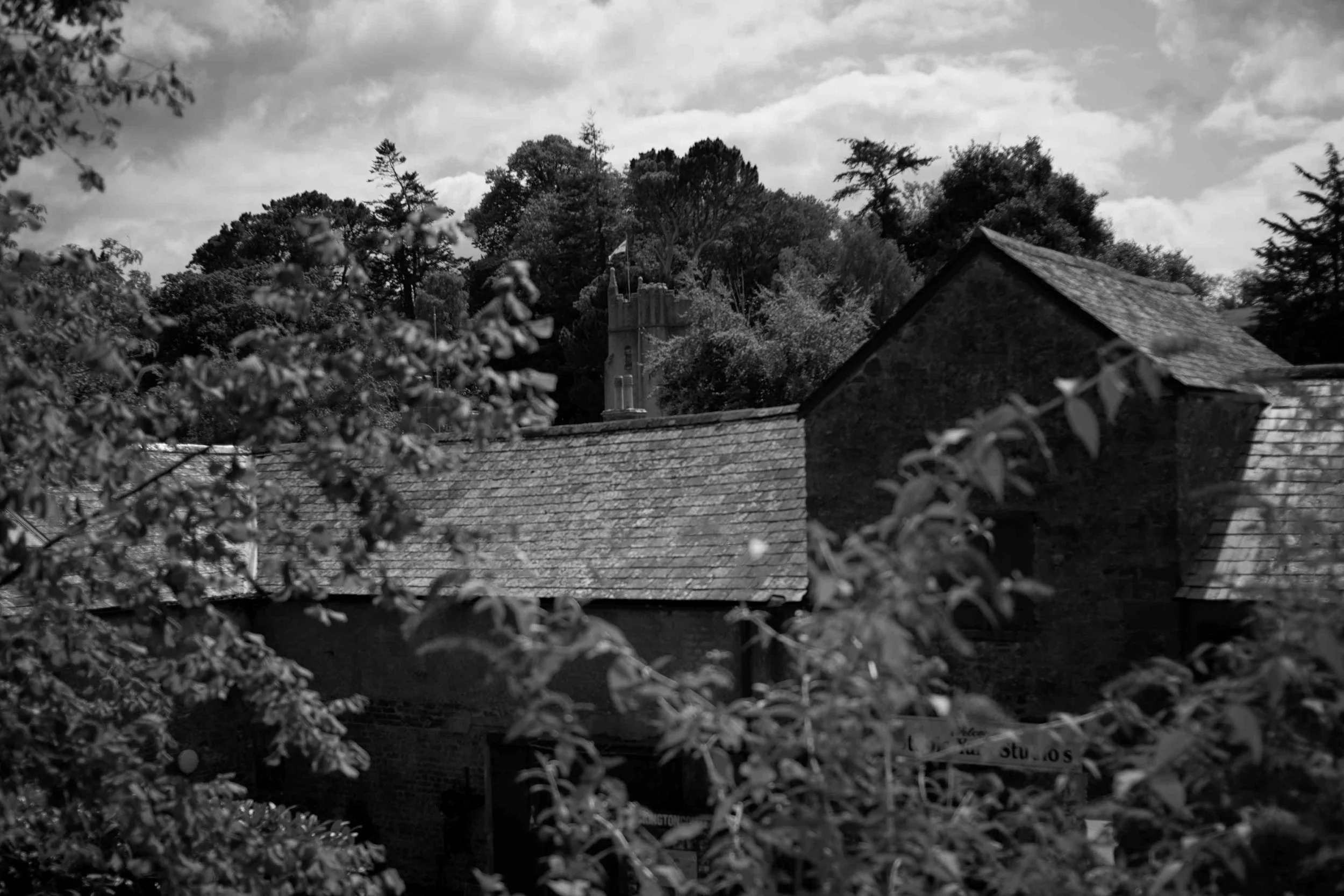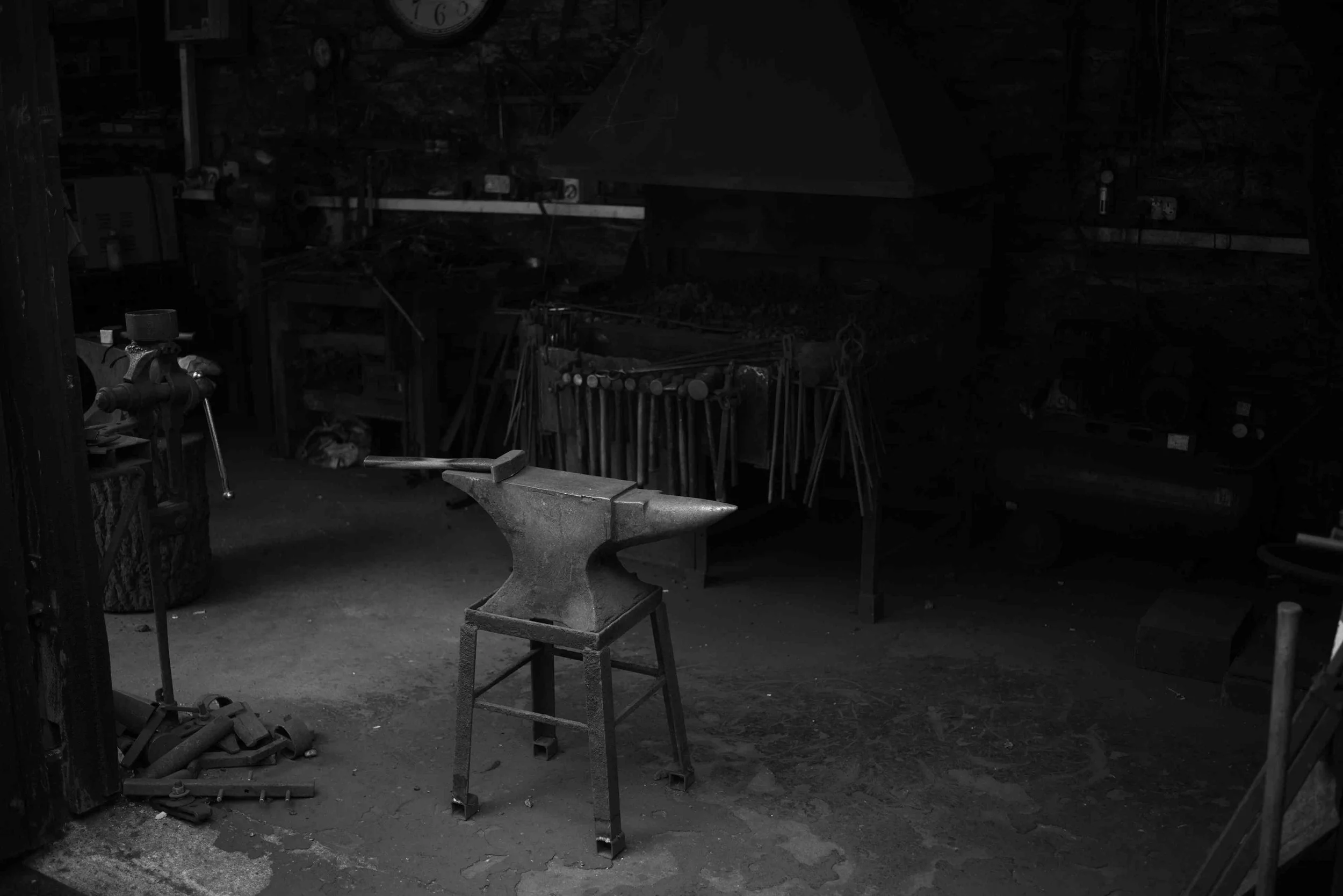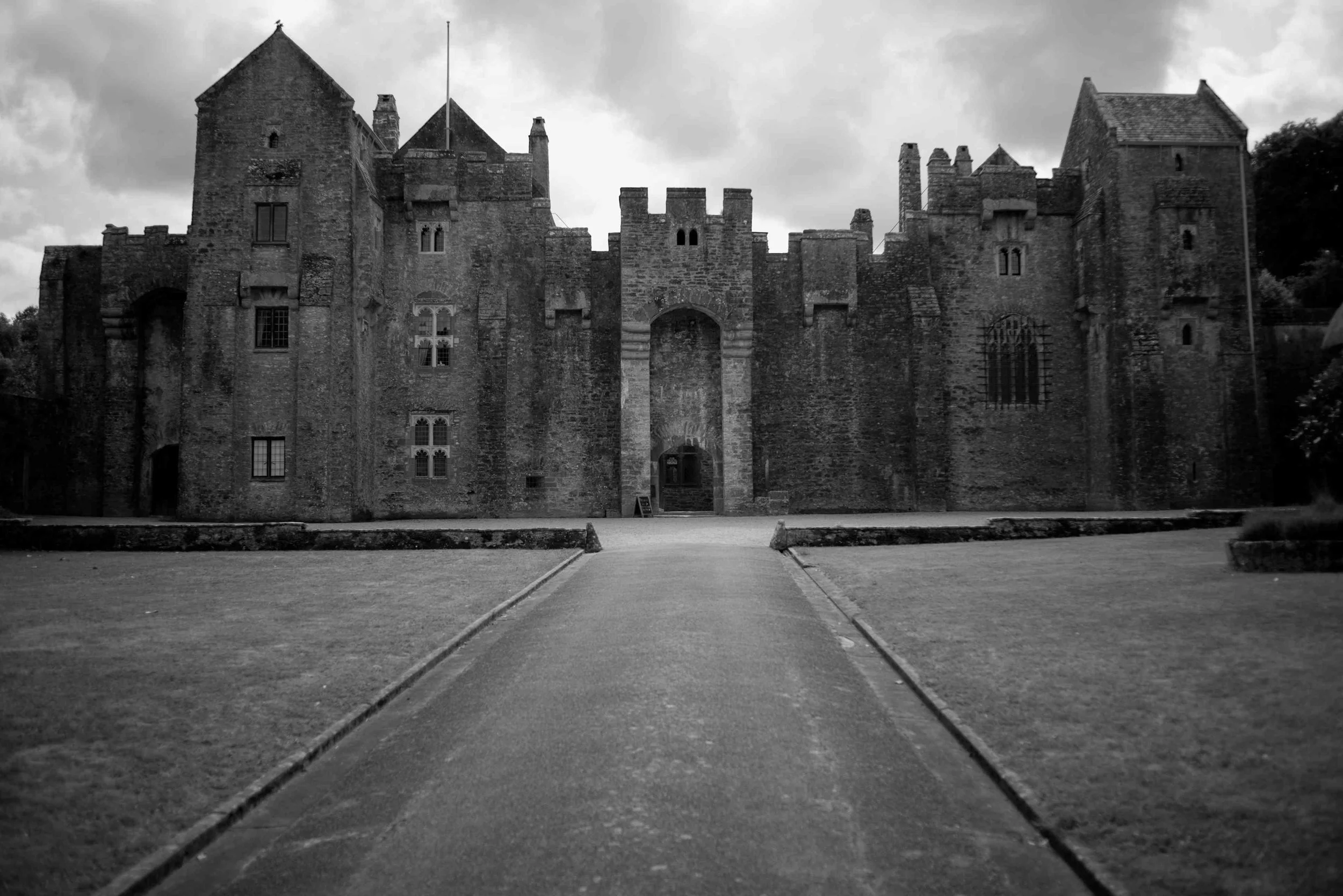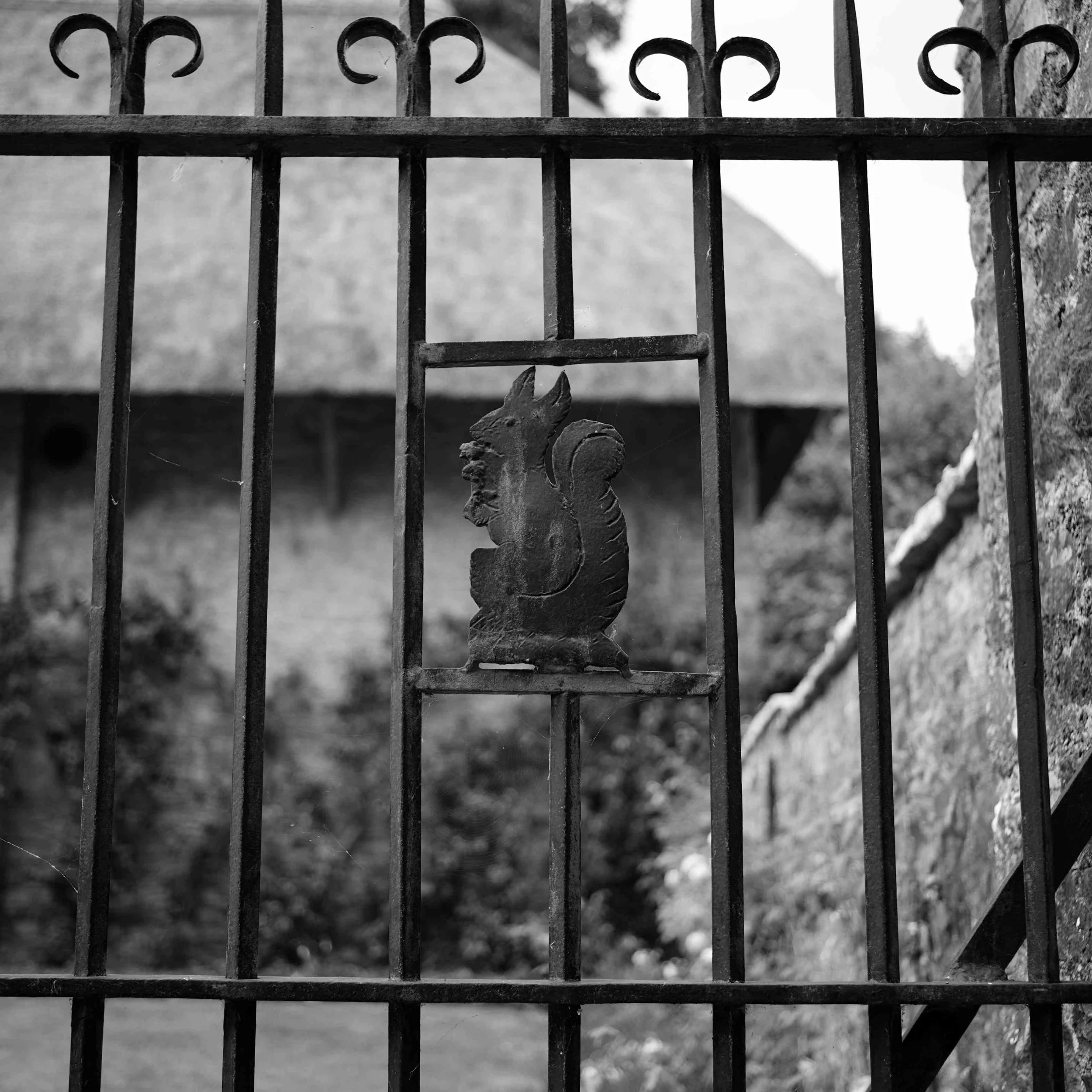We have been enjoying a wonderful summer here in the U.K. and Mrs. C and I have been trying to explore places of interest within an hours drive of our home in Plymouth.
Now Mrs. C is a wonder at putting together interesting trips and our next excursion was to be a “holy trinity’, combining the exploration of the Caves of Pengelly, a lunch in the beautiful hamlet of Cockington and a visit to Compton Castle. So we prepared a rather superior packed-lunch, fired up Bucephalus, dialled Pengelly Caves in to the sat-nav and headed up the A38.
We originally discovered the existence of Pengelly Caves during a visit to the Plymouth Box, our local museum. It is not so much that the caves themselves are of interest, but what has been found in them was what attracted our attention…hold that thought.
The caves are situated in the now disused Higher Kiln Quarry at Buckfastleigh, about a 30 minute drive from Plymouth and a stones-throw from Buckfast Abbey (see my blog of 31st July “Up The Devon Expressway And Turn Left”).
The caves are managed through the William Pengelly Cave Studies Trust. You can book a visit online at a cost of £8 per person. The whole operation is super friendly and informative and is run by volunteers who have both a great knowledge and a genuine love for what they do.
Welcome to Pengelly Caves Study Centre.
The man himself.
William Pengelly, a prominent figure in 19th century geology and archaeology, meticulously excavated the caves at Higher Kiln Quarry. His work helped establish the history of human presence in our part of the world alongside the remains of animals long extinct.
Before exploring any caves we received a 30 minute lecture about the history of the geology of the region. This was super interesting as we did not know that some 640 million years ago, the U.K. was actually located somewhere near the South Pole! However, due to massive movements in tectonic plates the U.K. eventually ended up in its current position.
As always I tend to over-prepare and turned up in full “North Face of The Eiger Mode” and was prepared to abseil down in to the abyss. However, it was all rather more relaxed than I had anticipated. There is no abseiling and we were just required to wear a hard hat and suitable footwear.
From a photography standpoint I chose the Leica SL2 and manually adapted the wonderfully little Voigtlander 35 mm F2.5 Color Skopar. I figured that the compactness of the lens combined with the high resolution and image stabilisation of the SL2 would be the ideal combination.
Mrs. C rocking the caving enthusiast look.
Our safety briefing from Alain, our excellent guide and “Speleologist”.
Our guide for the visit was Alain. He was an expert “Speleologist” (Speleology is the art of cave exploration) and has explored and surveyed caves all over the world. Alain ensured that everyone had sensible shoes, told us to wear our hard hat at all times and to watch out because it could be slippery underfoot. Apart from that the aim was to have a great time.
And we are off…….
There are numerous caves at the site including:
Reeds Cave - One of the most richly decorated caves in devon although, somewhat disappointly, access is restricted to specialist cavers and researchers. I did enquire why and Alain explained that in so many of Devon’s caves, unrestricted access has led to considerable damage and so the Trust has gone to great lengths to try and preserve Reeds Cave, in its original form, for the benefit of future study.
Rift Cave - Is a gated cave and provides a safe habitat for bats. It seems that this is an ideal home for these ‘lovable’ creatures, Alain’s description not mine, although I think you will agree the following image might make you think twice about walking in a cave full of bats in the dark!
A lovable little creature isn’t it……Not!
3. The Joint Mitnor Cave - This contains an internationally important deposit of fossil mammal bones from the last interglacial period of about 100,000 years ago.
The entrance to Reeds Cave.
The climb up to the entrance of the Joint Mitnor Cave.
The Joint Mitnor Cave was discovered and excavated in 1939 by A.H. Ogilvie when over 4,000 mammal bones were discovered, including mammals which were thought to have never existed in this part of the Uk including elephants, hyena and even hippopotamus!
Unfortunately in 2015 thieves broke in to the cave and stole a number of the bones. At great expense reconstructions of the bones were produced by academics using 3D printing technology.
Entrance to the Joint Mitnor Cave.
Once inside the cave Alain explained the geology, he showed us the different sort of animal bones, along with an explanation of how these limestone caves were originally created. Although the cave is well lit there is not a great deal of room and so if you have a fear of enclosed spaces this is perhaps not for you.
Yes those are bones at the back of the cave.
Inside Joint Mitnor Cave.
All in all we had a great morning at Pengelly Caves and if you are driving down the Devon Expressway show them some support as it is well worth a visit.
Having spent an intrepid morning navigating caves the old stomach was rumbling and we needed to find somewhere to eat our rather superior packed lunch. About 30 minutes drive from the caves is the delightful village of Cockington. I never cease to be amazed at the beauty of Devon, which keeps producing little gems that I have never previously visited.
Like everywhere that is idealic in Devon, Cockington’s location does require some fearless driving. Our part of the world is notorious for its narrow country lanes. As the location becomes more rural the lanes go from double to single track. Once you see grass growing in the centre of the road you know you are in trouble.
There were two routes to Cockington, the easy route down an “A” road and the one we took, courtesy of google maps and me not paying attention. My stress was compounded by the fact that it is the middle of summer, so holiday traffic was particularly heavy. A 30 minute drive took nearer an hour but as we came round a bend in the road we arrived at Cockington village and it really was an exquisite location.
The village was probably founded some 2,500 years ago in the Iron Age. The first official documentation of the village was in the 10th century. The manor was owned by Alric the Saxon. The village later passed through the ownership of the Cary family (ownership between 1375 to 1654) before ownership passed to the Mallock family, a family of wealthy silversmiths from Exeter. They owned the estate until 1932 when it was sold to the Torquay Corporation.
Cockington has now developed in to a small village, with beautiful cottages, a pub “The Drum Inn” and still forms part of the Cockington Estate.
Arriving in Cockington Village.
Centre du ville.
My idea of a peaceful, rural Devon village.
We decided to eat our picnic in the beautiful grounds of Cockington Court, the original mansion house of the Mallock family. The grounds are free to enter and beautifully maintained. This was originally a medieval deer park but also contains a small cricket square and pavilion for those lovers of “The Summer Game”.
Other interesting facts are that in her youth, Agatha Christie was a regular visitor to Cockington and her novel, “Why didn’t They Ask Evans”, is dedicated to Christopher Mallock. Indeed the Mallocks regularly staged amateur theatricals at Cockington Court, in which Agatha Christie took part. Agatha was a resident of Greenaways House, Kingswear, located some half an hour away. This is well worth a visit and you can read more about it in my blog “Agatha” of 28th September 2023.
Cockington Court and its beautiful grounds.
Cockington Chapel behind the quant building housing all manner of local artisans and craftsmen.
After our lunch we explored the local crafts centre and watched glass blowing and a blacksmith at work.
“The Forge”. You know me by now, always looking for the arty shot.
Our final visit of the day was to Compton Castle. If I thought that the roads to Cockington were narrow the roads to Compton Castle were even worse. By the time we had arrived my nerves we completely frayed.
Compton Castle is actually located in the parish of Marldon and is more of a fortified Manor House than a castle.
The estate was the home to the families of Compton de la Pole, Doddicombe, Gilbert and Templer. However It has remained the home to the Gilbert family for over 600 years..
The manor was significantly enlarged in the 1450’s and then, in the 1520’s and in response to the threat of French raids on the Devon Coast, it was further fortified.
In 1583, in the name of Queen Elizabeth 1, Sir Humphrey Gilbert, a well known explorer, colonised Newfoundland. Two years later, his half brother, the well known explorer Sir Walter Raleigh started planning the Roanoke Colony in North Carolina. Sir Humphreys youngest son Raleigh Gilbert continued exploring and played his part in the Popham Colonony in Maine in 1607.
By 1800 the family had moved to Bodmin, Cornwall and the house fell in to disrepair. The property was bought by Commander Walter Raleigh Gilbert in 1931 and he made extensive renovations before the property was transferred over to the National Trust in 1951 although, the terms of the transfer stipulated that the Gilbert family continue to occupy the castle, which they still do, and administer it for the National Trust.
The squirrel features in the Gibert family coat of arms.
To my disappointment photography was not allowed within the property and,given that the Gilbert family remain in residence, there are only a few rooms open to the public. As a result Compton Castle is definitely worth a visit for National Trust members, but for the paying day-guest, I believe there are other more attractive National Trust offerings in the vicinity.
However, the walled garden is a joy and well worth a visit.
The gardens really are a delight.
View of the front of the house from the walled garden.
We did have a wonderful day out and as regular readers will know, such a day would not be complete without capturing Mrs. C on “The Bench of Contemplation”.
Mrs. C enjoying the dappled light on the “Bench of Contemplation”.
So there you have it, do much to see and do and all within an hour of our front door. There is still so much to do and see in Devon and Cornwall so stay tuned for further adventures.
Wishing you all good light and warmest regards from a sunny and peaceful Plymouth U.K.
